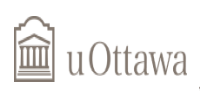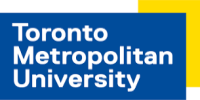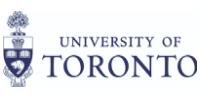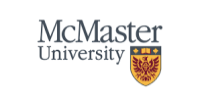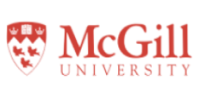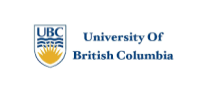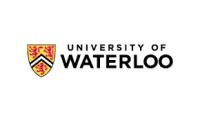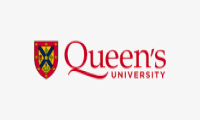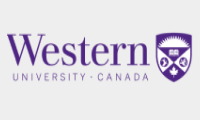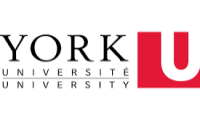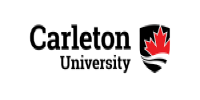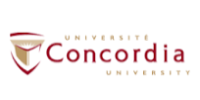HZT4U Philosophy: Questions and Theories
Course Outline
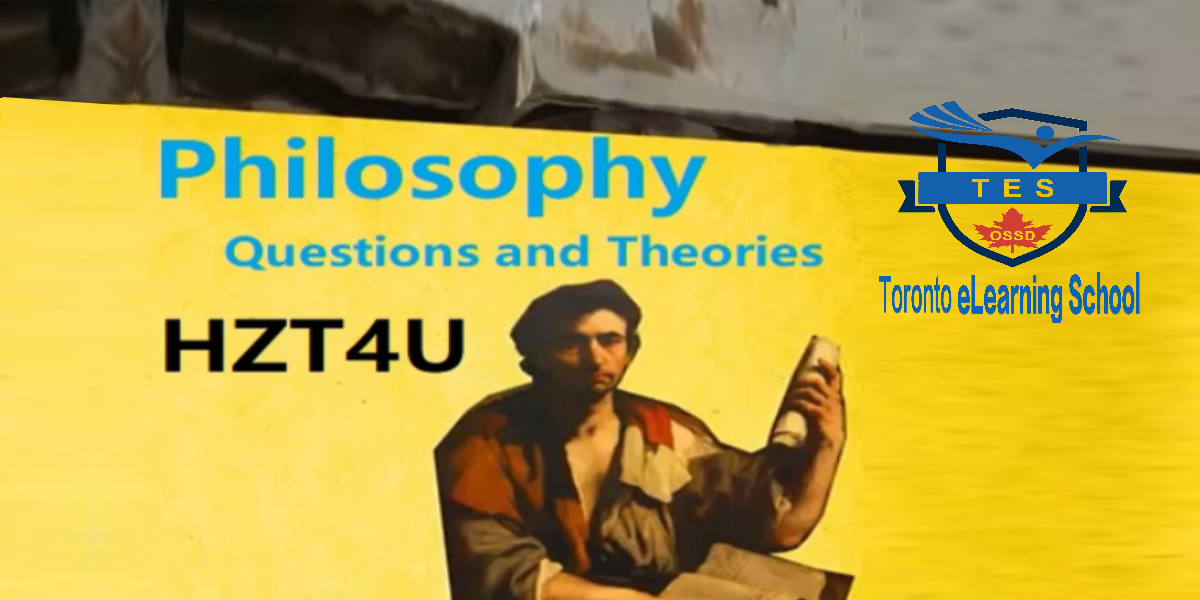
Course Title: Philosophy: Questions and Theories, Grade 12
Course Name: Philosophy: Questions and Theories
Course Code: HZT4U
Grade: 12
Course Type: University Preparation
Credit Value: 1.0
Prerequisite: Any university or university / college preparation course in social sciences and humanities, English, or Canadian and world studies.
Curriculum Policy Document: Social Sciences and Humanities, The Ontario Curriculum, Grades 9 to 12, 2013 (Revised)
Course Developer: Caroline H.
Department: Social Sciences and Humanities
Department Head: Lisa De Marco, B.A., B.Ed., OCT
Developed Date: 2020
Most Recent Revised Date: 2023 by Dan B.

Course Description :
Philosophy: Questions and Theories – HZT4U course enables students to acquire an understanding of the nature of philosophy and philosophical reasoning skills and to develop and apply their knowledge and skills while exploring specialized branches of philosophy (the course will cover at least three of the following branches: metaphysics, ethics, epistemology, philosophy of science, social and political philosophy, aesthetics). Students will develop critical thinking and philosophical reasoning skills as they formulate and evaluate arguments related to a variety of philosophical questions and theories. They will also develop research and inquiry skills related to the study and practice of philosophy.
| Unit | Titles and Descriptions | Time and Sequence |
|---|---|---|
| 1 | Introduction to Philosophy In this first unit of the course, students will spend time looking at what truly makes a good philosopher. They will look at the elements of a definition, the various kinds of definitions that exist as well as the differences between these kinds of definitions. Students will then look at arguments with the aim of understanding their structure as well as the two different kinds of arguments that exist. This unit also takes a look at ways to appraise an argument and, in particular, ways to discover faulty premises within an argument. Students will then go on to look at the meaning of a fallacy and discuss various selected examples of fallacies and learn just why they are mistakes of reason. Finally, students will briefly look at the life of the ancient Greek philosopher, Socrates, the Socratic method as well as examining how the Socratic method might even be more useful to us today than it was thousands of years ago. |
12 hours |
| 2 | Metaphysics The Metaphysics unit will begin by describing the ideas of the ancient Greek philosopher, Plato. Students will learn about his famous theory of the Forms and how it paved the way for all subsequent discussion regarding the mental and physical worlds or, more generally, the mind and body. Then the course will look at the ideas of the ancient Greek philosopher, Aristotle. In particular, students will learn about Aristotle’s particular conception of what is real in the world and how it corresponds and relates to Plato’s theory of the Forms. Third, students will study the medieval Italian philosopher, Saint Thomas Aquinas. By looking at Aquinas’ ideas they can see how he takes some of the views of Plato and Aristotle and combines them into a theory which he believes best explains the relationship between the mind (or soul, as he calls it) and body. Fourth, the course introduces the French philosopher, Rene Descartes, who is known to be the father of modern philosophy. In this section of the unit students will see how Descartes believed that he solved the question of whether to accept the existence of the mind or the body by accepting both as well as the serious problem that results from this position. Fifth, students will then look at the Dutch philosopher, Baruch Spinoza, who is known for his rather unorthodox views of God. In particular, students will see how his views on the mind and body are dramatically different than Descartes’ and will learn about the important alternative theory within philosophy that Spinoza is known to defend. Sixth, students will examine Gottfried Wilhelm Leibniz’s ideas, the German philosopher known for his rather peculiar theory about what really exists in the world. They will learn about the unique entity that he defends in particular as well as its relation to the mind and body in general. Finally, students will end the unit by studying the views of the Irish philosopher, George Berkeley, another philosopher known for his bold and very abstract views. They will learn about the specific theory that he defends as well as how his views are explicitly different than the other philosophers studied. The main aim of this unit will be to consider the metaphysical question of whether certain entities, such as the mind and body, really exist in the world. By studying each of the seven philosophers, all of whom are widely regarded as the greatest philosophers of all time, students should be able to gain an understanding of both their theories in general as well as how their theories relate to and address this important metaphysical issue. |
16 hours |
| 3 | Epistemology In the Epistemology unit students will take the time to learn about and focus their attention towards several areas of concern in the study of knowledge. For instance, the unit will begin by describing the epistemological theories of the ancient Greek philosopher, Plato. Students will learn about his distinction between belief and knowledge and how it paved the way for all subsequent discussion regarding the mental and physical worlds or, more generally, the mind and body. Then the course looks at the epistemological theories of the ancient Greek philosopher, Aristotle. In particular, students will discover that Aristotle is reluctant to totally reject the role of belief and will learn how this reluctance is ultimately related to his theory of sense perception. Third, they will study the epistemological theories of the French philosopher, Rene Descartes. In this section of the unit students will be presented with the famous theory within philosophy that argues that knowledge comes from reason, namely, rationalism. Then they will go on to study the epistemological theories of the English philosopher, John Locke. In particular, students will learn about the famous theory within philosophy that argues that knowledge comes from experience, namely, empiricism and will learn how it differs sharply from the theory of rationalism. Students will then examine the epistemological theories of the Scottish philosopher, David Hume. Here they will learn about the theory of scepticism and how Hume is primarily sceptical of reason and the theory of rationalism. Finally, students will end the unit by studying the views of the German philosopher, Immanuel Kant. In this final section they will learn about the high level of priority that Kant attaches to the role of reason and his consequent theory known as transcendental idealism. The main aim of this unit will be to examine some important epistemological theories as presented by some of the greatest philosophers of all time. By studying each of the above seven philosophers, students should be able to gain an understanding of their philosophy in general as well as how their philosophy relates to and addresses fundamental questions concerning the study of knowledge. |
14 hours |
| 4 | Ethics In the Ethics unit students will take the time to discuss some of the directions that philosophers can take within moral philosophy. For instance, the unit will begin by discussing the ethical theory of the ancient Greek philosopher, Plato. In particular, they will learn about how his famous theory of the forms is related to the branch of ethics in particular as well as his important conception of the Form of the Good. Then students will look at the ethical theory of the ancient Greek philosopher, Aristotle. Here students will discover that, rather than following Plato’s theory of the forms, when it came to living ethically Aristotle was more concerned about choices and actions in life as well as the specific notion of virtue. Next students will study the ethical theory of the third major philosopher to come out of ancient Greece, Epicurus. In particular, students will see how Epicurus’ ethical theory is distinct from that of Plato’s and Aristotle’s and students will pay close attention to the notion of pleasure, the concept at the foundation of all Epicurean philosophy. Fourth, students will go on to study the ethical theory of the English philosopher, Jeremy Bentham. In this section of the unit students will be presented with the famous theory within ethics known as utilitarianism and will discuss Bentham’s founding role with respect the theory. The course will then examine the ethical theory of the American philosopher, John Rawls. Here students will learn about the famous theory within ethics known as contractarianism and students will discuss the ways in which Rawls is understood to be a contractarian philosopher. Finally, students will end the unit by studying the ethical theory of the Canadian philosopher, G. A. Cohen. In this final section students will learn about the famous theory within ethics known as egalitarianism and students will learn about the ways in which Cohen is understood to be an egalitarian philosopher. The main aim of this unit will be to examine some important ethical theories as presented by some of the greatest moral philosophers of all time. By studying each of the above seven philosophers students should be able to gain an understanding of their philosophy in general as well as how their philosophy relates to and addresses fundamental questions concerning the study of ethics. |
14 hours |
| Midterm Assessment | ||
| Socratic Dinner Party Project This project is worth 10% of the final grade. For the project you will get a chance to re-write Plato by giving more of a voice to Euthyphro! |
8 hours | |
| 5 | Political Philosophy In the Political Philosophy unit students will take the time to discuss many of the different approaches to political philosophy as defended by some of the most famous and important political philosophers in the history of philosophy. For instance, the unit will begin by discussing the political philosophy of the ancient Greek philosopher, Plato. In particular, students will learn that a central part of Plato’s overall political theory was focused on outlining certain conditions that he believed would lead to what he viewed as the ideal state. Then students will look at the political theory of the ancient Greek philosopher, Aristotle. Here students will discover that, rather than following Plato’s goal of establishing the perfect state, what mattered more to Aristotle was the establishment of the proper function of the state for he viewed this as being the more important question. Next students will study the political theory of Thomas Hobbes. In particular, students will be introduced to the historical idea of the state of nature and will study exactly what the author of the famous idea had to say about it. As students will see, even today the concept of the state of nature is thought to provide the very reason why students should want government in their lives and why it is necessary and for this reason it is an imperative concept to study in any course in political philosophy. Then, in the next lesson students will go on to discuss the philosopher known as the father of liberalism, a theory which is easily said to be the most dominant political philosophy of the Western world, namely, John Locke. In particular, students will explore his ideas and learn how they are what provide the foundation of this massively influential political theory. Following that, students will discuss the philosopher regarded as the father of the important theory of conservatism, Edmund Burke. Students will learn about some of Burke’s main ideas and will see how they would become to be the founding principles within conservative thought. Finally, students will discuss the philosopher who is the father of the major political theory known as Marxism, namely, Karl Marx. Students will learn about the basic principles that Marx stood for and will come to understand how all of his ideas eventually became referred to under the general heading of Marxism. The main aim of this unit will be to examine some of the most important political questions and theories as presented by some of the greatest political philosophers of all time. By studying each of the above seven philosophers students should be able to gain an understanding of their philosophy in general as well as how their philosophy relates to and addresses fundamental issues concerning the study of political philosophy. |
14 hours |
| 6 | Existentialism In this unit students will take the time to discuss many of the themes within existentialism as portrayed by some of the most famous and important existential philosophers. For example, students will begin the unit by studying the philosopher who is considered to be the father of existentialism, Soren Kierkegaard. In particular, students will consider the general belief of his works, namely, his notion of subjectivity, as well as some of his more specific beliefs concerning what he refers to as ‘spheres of existence.’ Then students will look at some of the existential themes within the philosophy of Friedrich Nietzsche. Here students will be introduced to some key concepts within Nietzsche’s philosophy and will try to understand how they might all fit together to form a coherent theory about ourselves. Next students will study the existential ideas found in the works of Martin Heidegger. Students will look at what makes Heidegger an existentialist as well as his ideas concerning his special notion of being which he refers to as ‘Dasein.’ Then in the next lesson students will go on to discuss the existential ideas of Jean-Paul Sartre. In particular, students will study his concepts of freedom and choice as well as his idea that consciousness is really just nothingness. Finally, in the last lesson of the unit students will discuss Albert Camus and the existential themes presented in his works. Here students will see how, more than anything, he devotes his time to understanding the question of how one should be said to exist in an ultimately absurd world. The main aim of this unit will be to examine some of the most important existential ideas and themes as presented by some of the greatest existentialists of all time. By studying each of the above seven philosophers students should be able to gain an understanding of their philosophy in general as well as how their philosophy relates to and addresses fundamental issues within existentialism. |
12 hours |
| 7 | Conclusion In this final unit of the course students are going to look at how the subject applies to the real world, that is, students are going to talk about philosophy and how it relates to everyday life. After all, philosophy does indeed have real life implications and it is important to know that the subject has both a meaning and relevance that reaches far outside of the philosophy classroom. For example, as students might have experienced in some of their other courses, it is quite common for philosophy to be discussed in other subjects as well. In fact, philosophy is not only discussed in other subjects but, quite frequently, it is what provides the very foundation for which many subjects are built upon. Furthermore, it is important to realize that philosophy also exists and is very much alive within the media. One just has to pick up a newspaper to see the philosophical significance of many current issues. There is also very much to be said about those current philosophers who are making a difference in the field of philosophy as students speak. This just proves how great philosophy is not something that was produced generations ago but is, rather, still very much alive and being created today. Also relevant with respect to philosophy and everyday life is the issue of being able to find a job in the field. As a student of philosophy, for instance, it is important to know and understand what kinds of options are available to them were they to decide to seriously pursue the subject. Finally, another consideration to bear in mind when discussing the relationship between philosophy and the real world is the perhaps rather popular notion that philosophy has no relevance to the real world. Even though these particular kinds of comments are ultimately criticisms of philosophy, they, nonetheless, prove how philosophy has an undeniable impact on the world. In this concluding unit, then, students will spend time looking at each of the above concerns. First, students will see how philosophy is associated with other subjects and will discuss the relationships between philosophy and religion, philosophy and science and philosophy and literature and poetry. Next students will take some time to discuss some well-known contemporary philosophers. They will learn about the kinds of influence that they have had on philosophy today and why their thoughts and ideas will likely continue to have an influence in the future. Finally, students will go on to look at some of the different types of jobs that a person can enter into with a philosophy degree. While the most obvious career path for students of philosophy might be thought to be the continuation of philosophical study at advanced levels, in fact, there exists a wide range of different careers that many philosophy students commonly pursue. The future of philosophy will also be discussed and the course will end on a positive and optimistic note defending the vast usefulness of this very important subject. This concluding unit should help to shed light on some of philosophy’s more practical aspects as well as its exact role within the real world and everyday life. It might be popular to think that philosophy has no practical relevance to real life, however, it will be the main aim of this unit to dispel this notion and to emphasize that philosophy has just as much relevance as any other subject that students may study in school. |
8 hours |
| Final Assessment | ||
| Project This project is worth 30% of the final grade. For the course’s culminating activity students will have the opportunity to consider and respond to a passage from a primary source either in book format or from an online source. |
12 hours | |
| Total | 110 hours |
[expand title=”Overall Expectations: HZT4U:”]
| A. Research and Inquiry Skills | |
|---|---|
| A1 | Exploring: explore topics related to philosophical questions and/or issues, and formulate questions to guide their research; |
| A2 | Investigating: create research plans, and locate and select information relevant to their chosen topics, using appropriate philosophical research and inquiry methods; |
| A3 | Processing Information: assess, record, analyze, and synthesize information gathered through research and inquiry; |
| A4 | Communicating and Reflecting: communicate the results of their research and inquiry clearly and effectively, and reflect on and evaluate their research, inquiry, and communication skills. |
| B. Philosophical Foundations | |
| B1 | The Nature of Philosophy: demonstrate an understanding of the main areas of philosophy, periods of philosophical development, and the differences between philosophy and other areas of inquiry; |
| B2 | Philosophical Reasoning: demonstrate an understanding of philosophical reasoning and critical thinking skills, including skills required to identify and avoid common fallacies of reasoning, and demonstrate the ability to apply these skills in various contexts. |
| C. Core Topic: Metaphysics | |
| C1 | Understanding Metaphysics: demonstrate an understanding of the main questions in metaphysics, and of the positions of major philosophers and schools of philosophy with respect to some of these questions; |
| C2 | Exploring Metaphysics: demonstrate an understanding of metaphysical theories, and evaluate responses to some of the main questions in metaphysics by major philosophers and schools of philosophy; |
| C3 | Making Connections to Metaphysics: demonstrate an understanding of connections between metaphysics and other areas of philosophy, other subject areas, and various aspects of society, including everyday life; |
| C4 | Philosophical Reasoning in Metaphysics: use philosophical reasoning skills to develop, communicate, and defend their own responses to metaphysical questions |
| D. Core Topics: Ethics | |
| D1 | Understanding Ethics: demonstrate an understanding of the main questions in ethics, and of the positions of major philosophers and schools of philosophy with respect to some of these questions; |
| D2 | Exploring Ethics: demonstrate an understanding of theories in ethics, and evaluate responses to some of the main questions in ethics by major philosophers and schools of philosophy; |
| D3 | Making Connections to Ethics: demonstrate an understanding of connections between ethics and other areas of philosophy, other subject areas, and various aspects of society, including everyday life; |
| D4 | Philosophical Reasoning in Ethics: use philosophical reasoning skills to develop, communicate, and defend their own responses to philosophical questions in ethics; |
| E. Core Topics: Epistemology | |
| E1 | Understanding Epistemology: demonstrate an understanding of the main questions in epistemology, and of the positions of major philosophers and schools of philosophy with respect to some of these questions; |
| E2 | Exploring Epistemology: demonstrate an understanding of epistemological theories, and evaluate responses to some of the main questions in epistemology by major philosophers and schools of philosophy; |
| E3 | Making Connections to Epistemology: demonstrate an understanding of connections between epistemology and other areas of philosophy, other subject areas, and various aspects of society, including everyday life; |
| E4 | Philosophical Reasoning in Epistemology: use philosophical reasoning skills to develop, communicate, and defend their own responses to epistemological questions. |
| F. Supplementary Topics: Philosophy of Science | |
| F1 | Understanding the Philosophy of Science: demonstrate an understanding of the main questions in the philosophy of science, and of the positions of major philosophers and schools of philosophy with respect to some of these questions; |
| F2 | Exploring the Philosophy of Science: demonstrate an understanding of theories in the philosophy of science, and evaluate responses to some of the main questions in the philosophy of science by major philosophers and schools of philosophy; |
| F3 | Making Connections to the Philosophy of Science: demonstrate an understanding of connections between the philosophy of science and other areas of philosophy, other subject areas, and various aspects of society, including everyday life; |
| F4 | Philosophical Reasoning in the Philosophy of Science: use philosophical reasoning skills to develop, communicate, and defend their own responses to questions in the philosophy of science. |
| G. Supplementary Topics: Social and Political Philosophy | |
| G1 | Understanding Social and Political Philosophy: demonstrate an understanding of the main questions in social and political philosophy, and of the positions of major philosophers and schools of philosophy with respect to some of these questions; |
| G2 | Exploring Social and Political Philosophy: demonstrate an understanding of theories in social and political philosophy, and evaluate responses to some of the main questions in social and political philosophy by major philosophers and schools of philosophy; |
| G3 | Making Connections to Social and Political Philosophy: demonstrate an understanding of connections between social and political philosophy and other areas of philosophy, other subject areas, and various aspects of society, including everyday life; |
| G4 | Philosophical Reasoning in Social and Political Philosophy: use philosophical reasoning skills to develop, communicate, and defend their own responses to questions in social and political philosophy. |
| H. Supplementary Topics: Aesthetics | |
| H1 | Understanding Aesthetics: demonstrate an understanding of the main questions in aesthetics, and of the positions of major philosophers and schools of philosophy with respect to some of these questions; |
| H2 | Exploring Aesthetics: demonstrate an understanding of theories in aesthetics, and evaluate responses to some of the main questions in aesthetics by major philosophers and schools of philosophy; |
| H3 | Making Connections to Aesthetics: demonstrate an understanding of connections between aesthetics and other areas of philosophy, other subject areas, and various aspects of society, including everyday life; |
| H4 | Philosophical Reasoning in Aesthetics: use philosophical reasoning skills to develop, communicate, and defend their own responses to questions in aesthetics. |
[/expand]
[expand title=”Teaching / Learning Strategies:”]
As in a conventional classroom, instructors employ a range of strategies for teaching a course:
- Direct Instruction/Note Taking
- Reading
- Case Studies
- Structured Discussion
- Brainstorming
- Role-Play
- Group Work/Pair Work
- Independent Study/Research
In addition, teachers and students have at their disposal a number of tools that are unique to electronic learning environments:
- Electronic simulation activities
- Video presentations
- Discussion boards and email
- Assessments with real-time feedback
- Interactive activities that engage both the student and teacher in the subject
- Peer review and assessment
- Internet Instructional Videos
All course material is online, no textbook is required. Assignments are submitted electronically. Tests are completed online at a time convenient for the student, and the course ends in a final exam which the student writes under the supervision of a proctor approved by Toronto eLearning School at a predetermined time and place. The final mark and report card are then forwarded to the student’s home school.
Students must achieve the Ministry of Education learning expectations of a course and complete 110 hours of planned learning activities, both online and offline, in order to earn a course credit.
The chart below indicates some general examples of online and offline activities.
| Online Learning Activities | Offline Learning Activities |
|---|---|
| Watching instructional videos | Reading materials for course |
| Watching additional resources videos | Studying instructional material |
| Completing online timed assignments | Practicing skills |
| Contributing to Forums | Completing assignments |
| Uploading video presentations | Completing essays |
| Communicating with instructor | Preparing presentations |
| Participating in live conferences | Reviewing for tests and exams |
| Practicing through online quizzes | Researching topics on internet |
| Reviewing peer submissions | |
| Assessing peer presentations | |
| Completing online timed exam |
Students are expected to access and participate actively in course work and course forums on a regular and frequent basis. This interaction with other students is a major component of this course and there are minimum requirements for student communication and contribution.
[/expand]
[expand title=”Assessment and Evaluation:”]
Toronto eLearning School’s approach to assessment and evaluation is based on the Ontario Ministry of Education’s Growing Success 2010 document. Assessment is the process of gathering information that accurately reflects how well a student is achieving the curriculum expectations in a subject or course.
The primary purpose of assessment is to improve student learning. Assessment for this purpose is seen as both “assessment for learning” and “assessment as learning”. As part of assessment for learning, teachers provide students with descriptive feedback and coaching for improvement. Teachers engage in assessment as learning by helping all students develop their capacity to be independent, autonomous learners who are able to set individual goals, monitor their own progress, determine next steps, and reflect on their thinking and learning. Toronto eLearning School teachers use evidence from a variety of sources in their assessment. These include formal and informal observations, discussions, conversations, questioning, assignments, projects, portfolios, self-assessments, self-reflections, essays, and tests.
Assessment occurs concurrently and seamlessly with instruction. Our courses contain multiple opportunities for students to obtain information about their progress and achievement, and to receive feedback that will help them improve their learning. Students can monitor their own success through the tracking of learning goals and success criteria throughout all courses.
Summative “assessment of learning” activities occur at or near the end of periods of learning. Evidence of student achievement for evaluation is also collected over time from different sources, such as discussions, conversations and observation of the development of the student’s learning. Using multiple sources of evidence increases the reliability and validity of this evaluation. The evaluations are expressed as a percentage based upon the levels of achievement.
[/expand]
[expand title=”Assessment and Evaluation of Student Performance:”]
| Assessment as Learning | Assessment for Learning | Assessment of Learning |
|---|---|---|
| During each unit, students are asked to keep a log of new terminology they learn throughout the lessons and are asked to define that terminology. This will be a record of what students have learned, and provides a reference point for questions to ask the instructor, and a study guide when it comes to the final examination | Each unit will have a collection of texts that students are required to read, and each lesson will end with a set of questions to determine whether the student has a grasp on the knowledge needed to succeed in the course. | Two formal written assignments are distributed at various points in the course to assess the student’s learning on many of the topics studied during lessons. This assignment allows the instructor to see and assess the student’s ability to make further connections across texts. |
| Revising and editing written work is a large aspect of the course, which allows students to correct thinking, expand ideas, and change topics if necessary. Collaborative work between students when it comes to editing and revising is encouraged and suggested as a necessary component to the course. | Peer reviews and instructor consultations are a useful tool for students to assess their own ability to communicate thoughts and ideas, allowing them clarity on which aspects of the course they need to put more focus in. | A mid-term assignment will be distributed to students to assess their Knowledge and Understanding, as well as a summative assignment, which will both act as a way for students to demonstrate their ability to understand and make connections across several different texts. |
| Students will be utilizing the discussion forums to discuss work and ideas throughout the course, as well as having access to the instructor’s email address for any further concerns. | Discussion forums are not only used for discussion, but also as a way to check in on a student’s understanding, and to provide a gateway to resources that will aid in their learning and help them to be successful in the course. | The final examination will be the final assessment of the course, and will allow students to demonstrate their understanding of the covered content in the course. |
Growing Success articulates the vision the Ministry has for the purpose and structure of assessment and evaluation techniques. There are seven fundamental principles that ensure best practices and procedures of assessment and evaluation by TES teachers. Assessment and evaluations:
- are fair, transparent, and equitable for all students;
- support all students, including those with special education needs, those who are learning the language of instruction (English or French), and those who are First Nation, Metis, or Inuit;
- are carefully planned to relate to the curriculum expectations and learning goals and, as much as possible, to the interests, learning styles and preferences, needs, and experiences of all students;
- are communicated clearly to students and parents at the beginning of the school year or course and at other appropriate points throughout the school year or course;
- are ongoing, varied in nature, and administered over a period of time to provide multiple opportunities for students to demonstrate the full range of their learning;
- provide ongoing descriptive feedback that is clear, specific, meaningful, and timely to support improved learning and achievement
- develop students’ self-assessment skills to enable them to assess their own learning, set specific goals, and plan next steps for their learning.
[/expand]
[expand title=”The Final Grade“]
The evaluation for this course is based on the student’s achievement of curriculum expectations and the demonstrated skills required for effective learning. The percentage grade represents the quality of the student’s overall achievement of the expectations for the course and reflects the corresponding level of achievement as described in the achievement chart for the discipline. A credit is granted and recorded for this course if the student’s grade is 50% or higher. The final grade for this course will be determined as follows:
- 70% of the grade will be based upon evaluations conducted throughout the course. This portion of the grade will reflect the student’s most consistent level of achievement throughout the course, although special consideration will be given to more recent evidence of achievement.
- . 30% of the grade will be based on a final assessment, which may be a final exam, a final project, or a combination of both an exam and a project.
Final Grade Weight Breakdown
| 10% | Contributions to Discussion Forum |
| 50% | Unit Lesson Assignments |
| 10% | Mid Term Assignment |
| 30% | Final Culminating |
The general balance of weighting of the categories of the achievement chart throughout the course is
| Knowledge and Understanding | 25% |
| Thinking | 25% |
| Communication | 25% |
| Application | 25% |
[/expand]
[expand title=”The Report Card“]
Two official report cards are issued – midterm and final. Each report card will focus on two distinct but related aspects of student achievement. First, the achievement of curriculum expectations is reported as a percentage grade. Additionally, the course median is reported as a percentage. The teacher will also provide written comments concerning the student’s strengths, areas for improvement and next steps. Second, the learning skills are reported as a letter grade, representing one of four levels of accomplishment. The report cards contain separate sections for the reporting of these two aspects. The report card also indicates whether an OSSD credit has been earned.
[/expand]
[expand title=”Achievement Chart: Overall“]
The purpose of the achievement chart is to:
- provide a common framework that encompasses all curriculum expectations for all courses;
- guide the development of high-quality assessment tasks and tools;
- help teachers plan instruction for learning;
- assist teachers in providing meaningful feedback to students;
- provide various categories/criteria with which to assess and evaluate students’ learning.
The achievement chart provides a reference point for all assessment practice and a framework within which achievement will be assessed and evaluated.
- The chart is organized into four broad criteria; Knowledge / Understanding, Thinking / Investigation, Communication, and Application.
- The achievement chart describes the levels of achievement of the curriculum expectations within each subset of criteria.
- The “descriptor” indicates the characteristic of performance, with respect to a particular criterion, on which assessment or evaluation is focused.
- A specific “qualifier” is used to define each of the four levels of achievement. It is used along with a descriptor to produce a description of performance at a particular level.
- The following table provides a summary description of achievement in each percentage grade range and corresponding level of achievement:
| A Summary Description of Achievement in Each Percentage Grade Range and Corresponding Level of Achievement | ||
| Percentage Grade Range | Achievement Level | Summary Description |
| 80-100% | Level 4 | A very high to outstanding level of achievement. Achievement is above the provincial standard. |
| 70-79% | Level 3 | A high level of achievement. Achievement is at the provincial standard. |
| 60-69% | Level 2 | A moderate level of achievement. Achievement is below, but approaching, the provincial standard. |
| 50-59% | Level 1 | A passable level of achievement. Achievement is below the provincial standard. |
| below 50% | Level R | Insufficient achievement of curriculum expectations. A credit will not be granted. |
[/expand]
[expand title=”Achievement Chart – Social Sciences and Humanities, Grades 9–12“]
| Knowledge and Understanding – Subject-specific content acquired in each course (knowledge), and the comprehension of its meaning and significance (understanding) | ||||
| The student: | ||||
| Knowledge of content (e.g., facts, terms, definitions, safe practices and procedures, use of technologies) |
demonstrates limited knowledge of content | demonstrates some knowledge of content | demonstrates considerable knowledge of content | demonstrates thorough knowledge of content |
| Understanding of content (e.g., concepts, theories, ideas, processes; relationship between theory and action) |
demonstrates limited understanding of content | demonstrates some understanding of content | demonstrates considerable understanding of content | demonstrates thorough and insightful understanding of content |
| Thinking – The use of critical and creative thinking skills and/or processes | ||||
| The student: | ||||
| Use of planning skills (e.g., formulating questions, identifying problems, gen ¬ erating ideas, gathering and organizing information, focusing research, selecting strategies) |
uses planning skills with limited effectiveness | uses planning skills with moderate effectiveness | uses planning skills with considerable effectiveness | uses planning skills with a high degree of effectiveness |
| Use of processing skills (e.g., analysing, detecting point of view and bias, interpreting, evaluating, synthesizing, forming conclusions) |
uses processing skills with limited effectiveness | uses processing skills with some effectiveness | uses processing skills with considerable effectiveness | uses processing skills with a high degree of effectiveness |
| Use of critical/creative thinking processes (e.g., goal setting, decision making, problem solving, invention, critiquing, reviewing) |
uses critical / creative thinking processes with limited effectiveness | uses critical / creative thinking processes with some effectiveness | uses critical / creative thinking processes with considerable effectiveness | uses critical / creative thinking processes with a high degree of effectiveness |
| Communication – The conveying of meaning through various forms | ||||
| The student: | ||||
| Organization and expression of ideas, information, and understandings in oral, visual, and/or written forms (e.g., oral: role plays, interviews, presentations, debates; visual: demonstrations, multimedia presentations, posters, graphic organizers; written: pamphlets, journals, reports, web pages) | organizes and expresses ideas, information, and understandings with limited effectiveness | organizes and expresses ideas, information, and understandings with some effectiveness | organizes and expresses ideas, information, and understandings with considerable effectiveness | organizes and expresses ideas, information, and understandings with a high degree of effectiveness |
| Communication for different audiences (e.g., peers, adults, younger children, community members) and purposes (e.g., to inform, instruct, persuade) in oral, visual, and/or written forms | communicates for different audiences and purposes with limited effectiveness | communicates for different audiences and purposes with some effectiveness | communicates for different audiences and purposes with considerable effectiveness | communicates for different audiences and purposes with a high degree of effectiveness |
| Use of conventions (e.g., research conventions such as surveys, documentation conventions, communication conventions),vocabulary, and terminology of the discipline in oral, visual, and/or written forms | uses conventions, vocabulary, and terminology of the discipline with limited effectiveness | uses conventions, vocabulary, and terminology of the discipline with some effectiveness | uses conventions, vocabulary, and terminology of the discipline with considerable effectiveness | uses conventions, vocabulary, and terminology of the discipline with a high degree of effectiveness |
| Application – The use of knowledge and skills to make connections within and between various contexts | ||||
| The student: | ||||
| Application of knowledge and skills (e.g., concepts, procedures, processes, methodologies, technologies) in familiar contexts | applies knowledge and skills in familiar contexts with limited effectiveness | applies knowledge and skills in familiar contexts with some effectiveness | applies knowledge and skills in familiar contexts with considerable effectiveness | applies knowledge and skills in familiar contexts with a high degree of effectiveness |
| Transfer of knowledge and skills to new contexts (e.g., other subjects; experiences in the family, community, society; using theory to help understand personal experiences) | transfers knowledge and skills to new contexts with limited effectiveness | transfers knowledge and skills to new contexts with some effectiveness | transfers knowledge and skills to new contexts with considerable effectiveness | transfers knowledge and skills to new contexts with a high degree of effectiveness |
| Making connections within and between various contexts (e.g., past, present, future; environmental, personal, social, religious, cultural, socio-economic contexts) | makes connections within and between various contexts with limited effectiveness | makes connections within and between various contexts with some effectiveness | makes connections within and between various contexts with considerable effectiveness | makes connections within and between various contexts with a high degree of effectiveness |
Note: A student whose achievement is below 50% at the end of a course will not obtain a credit for the course.
[/expand]
[expand title=”Resources required by students“]
- Access to HZT4U online course of study
- Access to a scanner or digital camera
- Access to a word-processing software
- Access to Google and various online resources
- Access to Youtube
Reference Texts
This course is entirely online and does not require or rely on any textbook.
[/expand]
[expand title=”Program Planning Considerations for Social Sciences“]
Program Planning Considerations Teachers who are planning a program in this subject will make an effort to take into account considerations for program planning that align with the Ontario Ministry of Education policy and initiatives in a number of important areas.
- Education for students with special education needs
- Environmental education
- Equity and inclusive education
- Financial literacy education
- Ontario First Nations, Metis, and Inuit education
- Role of information and communications technology
- English language learners
- Career education
- Cooperative education and other workplace experiences
- Health and safety
- Education for Students with Special Education Needs:
Toronto eLearning School is committed to ensuring that all students are provided with the learning opportunities and supports they require to gain the knowledge, skills, and confidence they need to succeed in a rapidly changing society. The context of special education and the provision of special education programs and services for exceptional students in Ontario are constantly evolving. Provisions included in the Canadian Charter of Rights and Freedoms and the Ontario Human Rights Code have driven some of these changes. Others have resulted from the evolution and sharing of best practices related to the teaching and assessment of students with special educational needs.
The provision of special education programs and services for students at Toronto eLearning School rests within a legal framework The Education Act and the regulations related to it set out the legal responsibilities pertaining to special education. They provide comprehensive procedures for the identification of exceptional pupils, for the placement of those pupils in educational settings where the special education programs and services appropriate to their needs can be delivered, and for the review of the identification of exceptional pupils and their placement.
Teachers will take into account the needs of exceptional students as set out in the students’ Individual Education Plan. The online courses offer a vast array of opportunities for students with special educations needs to acquire the knowledge and skills required for our evolving society. Students who use alternative techniques for communication may find a venue to use these special skills in these courses. There are a number of technical and learning aids that can assist in meeting the needs of exceptional students as set out in their Individual Education Plan. In the process of taking their online course, students may use a personal amplification system, tela-typewriter (via Bell relay service), an oral or a sign-language interpreter, a scribe, specialized computer programs, time extensions, ability to change font size, oral readers, etc. - Environmental Education:
Environmental education teaches students about how the planet’s physical and biological systems work, and how we can create a more sustainable future. Good curriculum design allows environmental issues and topics to be woven in and out of the online course content. This ensures that the student will have opportunities to acquire the knowledge, skills, perspectives and practices needed to become an environmentally literate citizen. The online course should provide opportunities for each student to address environmental issues in their home, in their local community, or even at the global level. - Equity and Inclusive Education:
Toronto eLearning School is taking important steps to reduce discrimination and embrace diversity in our online school in order to improve overall student achievement and reduce achievement gaps due to discrimination. The Ontario Equity and Inclusive Education Strategy was launched in April 2009 and states that all members of the Toronto eLearning School community are to be treated with respect and dignity. This strategy is helping Toronto eLearning School educators better identify and remove discriminatory biases and systemic barriers to student achievement. These barriers related to racism, sexism, homophobia and other forms of discrimination may prevent some students from reaching their full potential. The strategy supports the Ministry’s key education priorities of high student achievement, reduced gaps in student achievement and increased accountability and public confidence in Ontario’s schools. Students, regardless of their background or personal circumstances, must be given every opportunity to reach their full potential. Research shows that when students feel welcomed and accepted in their school, they are more likely to succeed academically. Toronto eLearning School desires to create a culture of high expectations where factors such as race, age, gender, sexual orientation and socio-economic status do not prevent students from achieving ambitious outcomes. - Financial Literacy Education:
Financial literacy may be defined as having the knowledge and skills needed to make responsible economic and financial decisions with competence and confidence. Since making financial decisions has become an increasingly complex task in the modern world, students need to have knowledge in various areas and a wide range of skills in order to make informed decisions about financial matters. Students need to be aware of risks that accompany various financial choices. They need to develop an understanding of world economic forces as well as ways in which they themselves can respond to those influences and make informed choices. Toronto eLearning School considers it essential that financial literacy be considered an important attribute of a well-educated population. In addition to acquiring knowledge in such specific areas as saving, spending, borrowing, and investing, students need to develop skills in problem solving, inquiry, decision making, critical thinking, and critical literacy related to financial and other issues. The goal is to help students acquire the knowledge and skills that will enable them to understand and respond to complex issues regarding their own personal finances and the finances of their families, as well as to develop an understanding of local and global effects of world economic forces and the social, environmental, and ethical implications of their own choices as consumers. The Ministry of Education and Toronto eLearning School are working to embed financial literacy expectations and opportunities in all courses as appropriate, as part of the ongoing curriculum review process. - Ontario First Nations, Metis, and Inuit Education:
First Nation, Metis, and Inuit students in Ontario will need to have the knowledge, skills, and confidence they need to successfully complete their elementary and secondary education in order to pursue postsecondary education or training and/or to enter the workforce. They will need to have the traditional and contemporary knowledge, skills, and attitudes required to be socially contributive, politically active, and economically prosperous citizens of the world. All students in Ontario will need to have knowledge and appreciation of contemporary and traditional First Nation, Metis, and Inuit traditions, cultures, and perspectives. Toronto eLearning School and the Ministry of Education are committed to First Nation, Metis, and Inuit student success. TES teachers are committed to (1) developing strategies that will increase the capacity of the education system to respond to the learning and cultural needs of First Nation, Metis, and Inuit students; (2) providing quality programs, services, and resources to help create learning opportunities for First Nation, Metis, and Inuit students that support improved academic achievement and identity building; (3) providing a curriculum that facilitates learning about contemporary and traditional First Nation, Metis, and Inuit cultures, histories, and perspectives among all students where possible; and (4) developing and implementing strategies that facilitate increased participation by First Nation, Metis, and Inuit parents, students, communities, and organizations in working to support the academic success of the student. - The Role of Information and Communications Technology in the Curriculum.
Information literacy is the ability to access, select, gather, critically evaluate, and create information. Communication literacy refers to the ability to communicate information and to use the information obtained to solve problems and make decisions. Information and communications technologies are utilized by all TES students when the situation is appropriate within their online course. As a result, students will develop transferable skills through their experience with word processing, internet research, presentation software, and telecommunication tools, as would be expected in any other course or any business environment. - English Language Learners:
This Toronto eLearning School online course can provide a wide range of options to address the needs of ESL/ELD students. This online course must be flexible in order to accommodate the needs of students who require instruction in English as a second language or English literacy development. The TES teacher considers it to be their responsibility to help students develop their ability to use the English language properly. Appropriate modifications to teaching, learning, and evaluation strategies in this course may be made in order to help students gain proficiency in English, since students taking English as a second language at the secondary level have limited time in which to develop this proficiency. This online course can provide a wide range of options to address the needs of ESL/ELD students. Well written content will aid ESL students in mastering not only the content of this course, but as well, the English language and all of its idiosyncrasies. Toronto eLearning School has created course content to enrich the student’s learning experience. In addition, since many occupations in Canada require employees with capabilities in the English language, many students will learn English language skills which can contribute to their success in the larger world. - Career Education:
As the online student progresses through their online course, their teacher is available to help the student prepare for employment in a huge number of diverse areas. With the help of their teacher, students will learn to set and achieve goals and will gain experience in making meaningful decisions concerning their career choices. The skills, knowledge and creativity that students acquire through this online course are essential for a wide range of careers. Throughout their secondary school education, students will learn about the educational and career opportunities that are available to them; explore and evaluate a variety of those opportunities; relate what they learn in their courses to potential careers in a variety of fields; and learn to make appropriate educational and career choices. - Cooperative Education and Other Workplace Experiences:
By applying the skills they have developed, students will readily connect their classroom learning to real-life activities in the world in which they live. Cooperative education and other workplace experiences will broaden their knowledge of employment opportunities in a wide range of fields. In addition, students will increase their understanding of workplace practices and the nature of the employer-employee relationship. TES teachers will try to help students link to Ministry programs to ensure that students have information concerning programs and opportunities. - Health and Safety:
The study of healthy relationships occurs throughout the social sciences and humanities curriculum. For example, the Dynamics of Human Relationships course provides opportunities for students to explore the topic of healthy relationships and to develop strong social skills and communication strategies. This course also explores the barriers to forming strong, healthy relationships and provides students with important information about how to recognize and respond to unhealthy relationships. The equity studies courses provide opportunities for students to develop their understanding of the ways in which power dynamics are an integral component of all relationships. These courses also allow students to explore the ways in which core aspects of identity – including sex, gender and gender identity, and ethnocultural and religious background – contribute to power dynamics that can facilitate or hinder the formation of healthy relationships.
The knowledge, skills, and habits of mind that are addressed in all courses in social sciences and humanities encourage open-mindedness as well as respect for and deep understanding of self and others, providing a foundation for forming and maintaining healthy relationships.
[/expand]

 "Hey, Rebecca, Thank you so much for your help. I don't think there is anyone in education who helped me more than you.
I got the final confirmation email and finally got into McMaster thank you for all your help.
I owe my success in university admission to you and Toronto eLearning School."
Hadi Khan, Life Science in McMaster University
"Hey, Rebecca, Thank you so much for your help. I don't think there is anyone in education who helped me more than you.
I got the final confirmation email and finally got into McMaster thank you for all your help.
I owe my success in university admission to you and Toronto eLearning School."
Hadi Khan, Life Science in McMaster University "My name is Kasra Zarbakhsh in Iran. I enjoyed my study at Toronto eLearnihng School with the kind staff. I suggest studying at eLearning School for those International or Canadian students who want to earn the OSSD.
I earned eight credits with eLearning School, got two university offers, and got an OSSD.
Warm regards to Principal & Vice-Principal of Toronto eLearning School, Mr. Bowyer & Ms. Wang."
Kasra Zarbakhsh, Business Administration of Legal Studies in Trent University.
"My name is Kasra Zarbakhsh in Iran. I enjoyed my study at Toronto eLearnihng School with the kind staff. I suggest studying at eLearning School for those International or Canadian students who want to earn the OSSD.
I earned eight credits with eLearning School, got two university offers, and got an OSSD.
Warm regards to Principal & Vice-Principal of Toronto eLearning School, Mr. Bowyer & Ms. Wang."
Kasra Zarbakhsh, Business Administration of Legal Studies in Trent University. "Hello miss, I have got my marks. Thank you so much at the end. you helped me a lot with this course. Your feedbacks were very effective to me.
I got many experiences with this. I really appreciate your kindness to refer my mails and reply them all and give feedbacks for my resubmitted assignments as well.
Lucky to have a teacher like you miss. Thank you so much and wish your future works with my best."
Naveen Srimal Kandamulla, Medicine in Manipal Medical University
"Hello miss, I have got my marks. Thank you so much at the end. you helped me a lot with this course. Your feedbacks were very effective to me.
I got many experiences with this. I really appreciate your kindness to refer my mails and reply them all and give feedbacks for my resubmitted assignments as well.
Lucky to have a teacher like you miss. Thank you so much and wish your future works with my best."
Naveen Srimal Kandamulla, Medicine in Manipal Medical University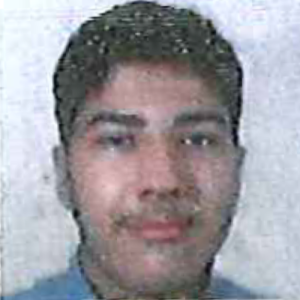 I am writing to express my deepest gratitude for your unwavering support and guidance throughout my academic journey with eLearning School.
Your dedication and expertise have been instrumental in my success in the course, and I cannot thank you enough for your invaluable contributions.
Thank you for being an exceptional educator at eLearning School and for making a positive impact on my life. I wish you continued success and fulfillment in your teaching career.
With utmost respect and gratitude, Zaid Hassan
I am writing to express my deepest gratitude for your unwavering support and guidance throughout my academic journey with eLearning School.
Your dedication and expertise have been instrumental in my success in the course, and I cannot thank you enough for your invaluable contributions.
Thank you for being an exceptional educator at eLearning School and for making a positive impact on my life. I wish you continued success and fulfillment in your teaching career.
With utmost respect and gratitude, Zaid Hassan "Dear Rebecca, Thank you very much for attaching Michael's OSSD and transcript.
Michael has received all his offers from Ryerson University, York University, University of Toronto and Mississauga, U of T.
We would also like to thank you for your wishes. We are very proud of Michael and his accomplishments! Thank you once again."
Anna k., ASSISTANT REGISTRAR, VICTORIA COLLEGE IN THE UNIVERSITY OF TORONTO
"Dear Rebecca, Thank you very much for attaching Michael's OSSD and transcript.
Michael has received all his offers from Ryerson University, York University, University of Toronto and Mississauga, U of T.
We would also like to thank you for your wishes. We are very proud of Michael and his accomplishments! Thank you once again."
Anna k., ASSISTANT REGISTRAR, VICTORIA COLLEGE IN THE UNIVERSITY OF TORONTO "Dear Rebecca, hope you are doing well.
I am taking this opportunity to thank you so much for the accompaniment, advise and the push done on Williane 's during her studies at Toronto eSchool. It was so benefic to her as now, she fitted very well into the University system... she started with 2 courses and has succeeded with a grade of B+ and A.... she promised to get A+ moving forward... at least, she started with good marks compared the way I was so so much worried about her performance. I have a confident she will be able to finish her studies withing the 4 academic years.
Again, find my sincere gratitude for the journey and support from your side; I will never forget about your advise, push, reminders, mails.... All to get Williane succeed her Grade 12. You are very professional and I m thank God I found a such professional and parent teacher. Remain blessed."
Honorine N., Procurement Manager, United Nations Children's Fund (UNICEF)
"Dear Rebecca, hope you are doing well.
I am taking this opportunity to thank you so much for the accompaniment, advise and the push done on Williane 's during her studies at Toronto eSchool. It was so benefic to her as now, she fitted very well into the University system... she started with 2 courses and has succeeded with a grade of B+ and A.... she promised to get A+ moving forward... at least, she started with good marks compared the way I was so so much worried about her performance. I have a confident she will be able to finish her studies withing the 4 academic years.
Again, find my sincere gratitude for the journey and support from your side; I will never forget about your advise, push, reminders, mails.... All to get Williane succeed her Grade 12. You are very professional and I m thank God I found a such professional and parent teacher. Remain blessed."
Honorine N., Procurement Manager, United Nations Children's Fund (UNICEF)